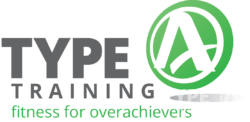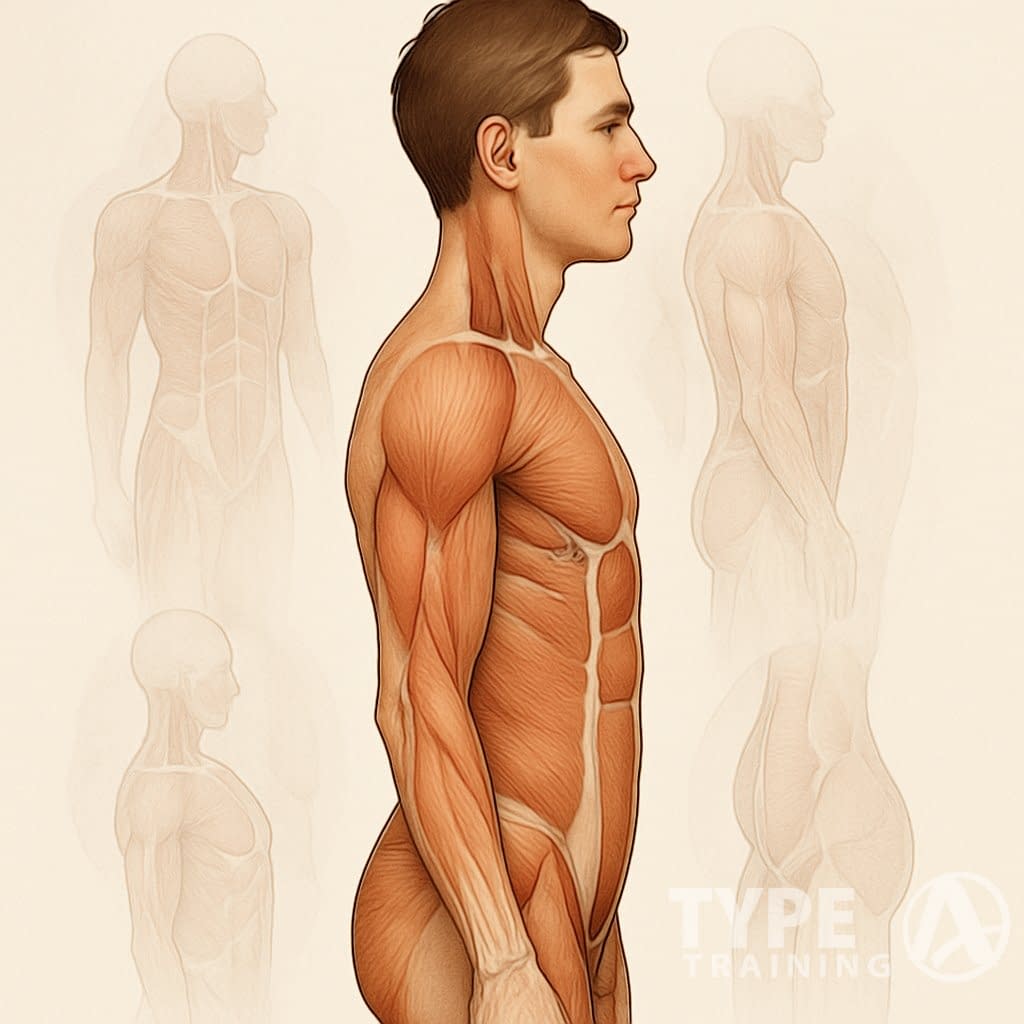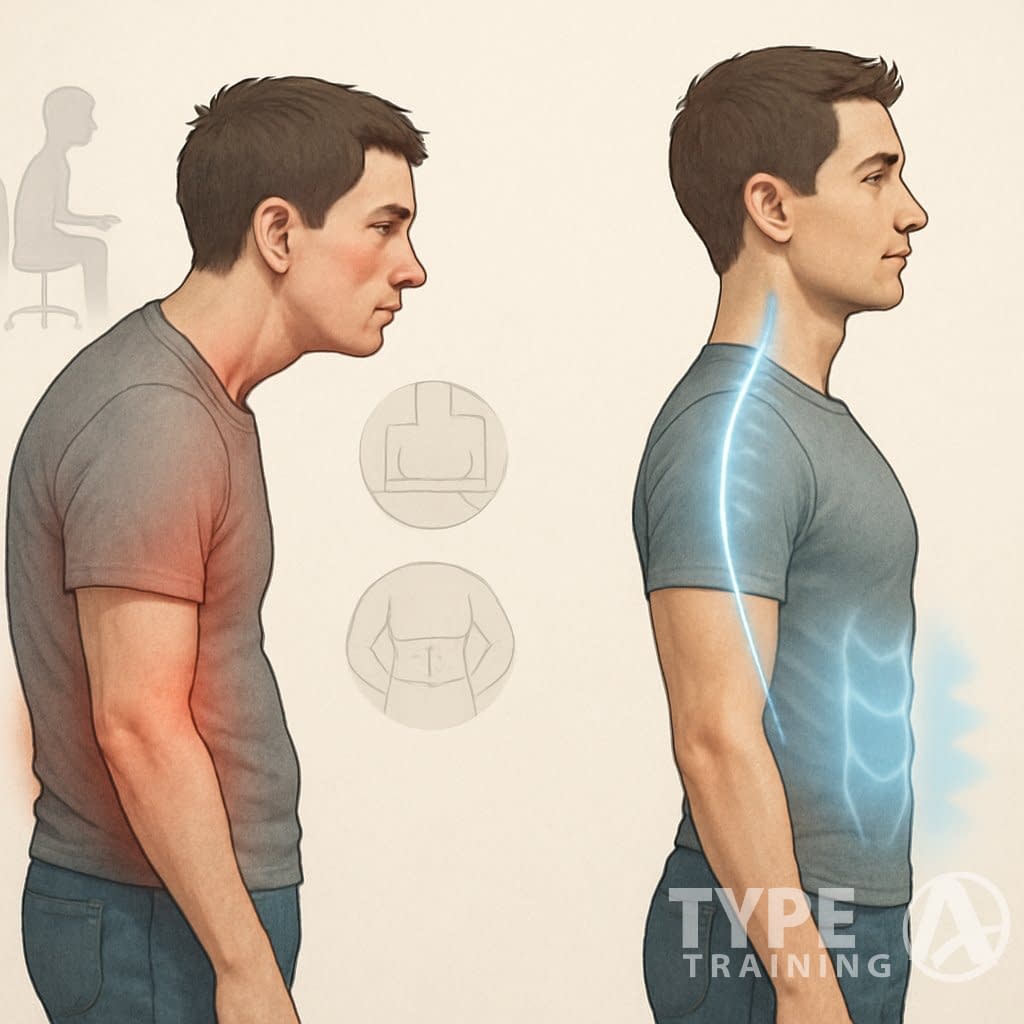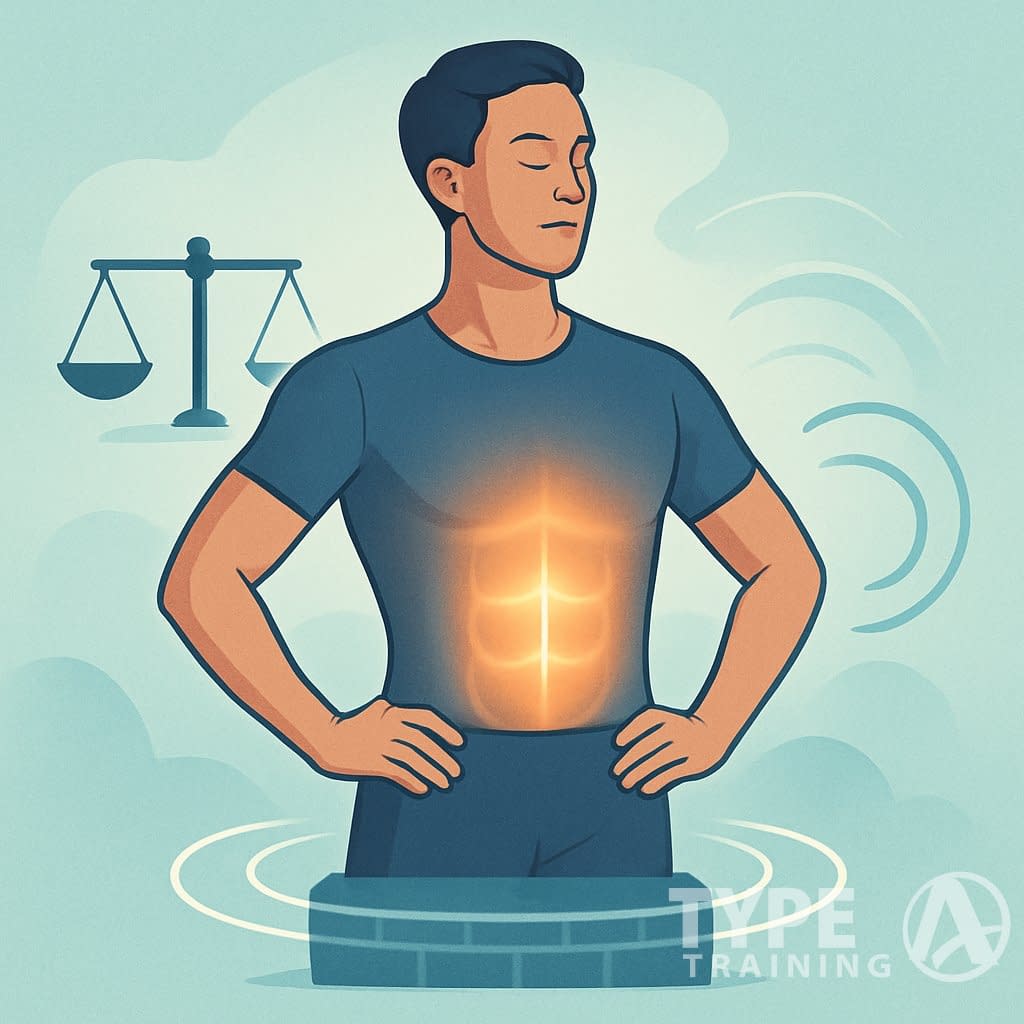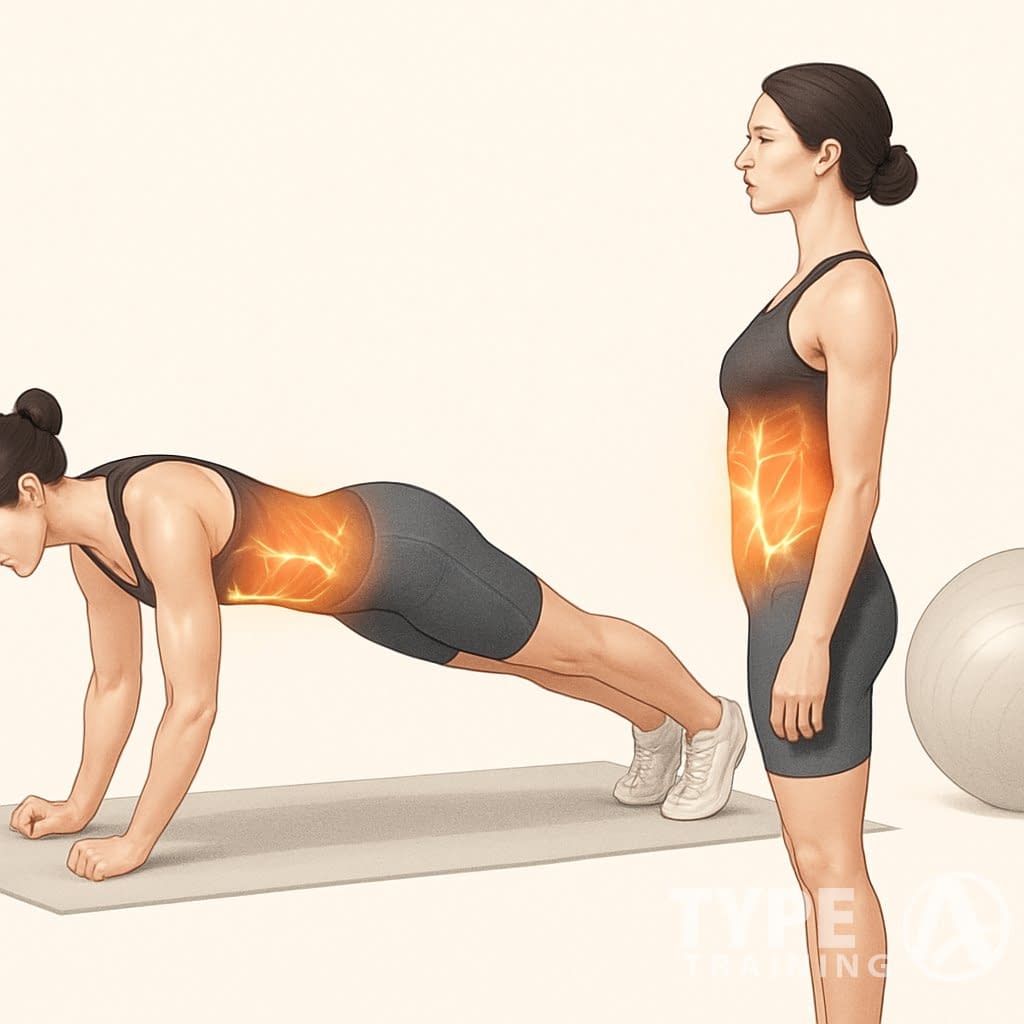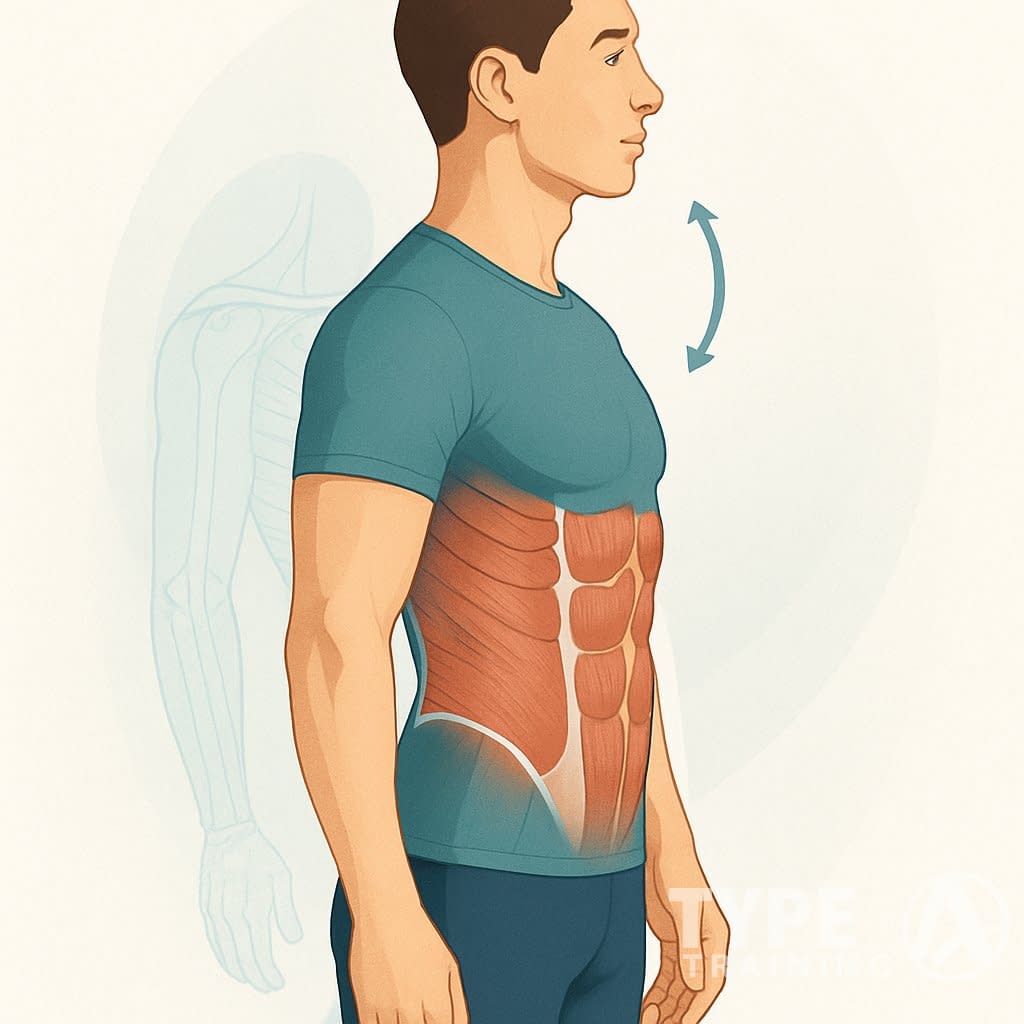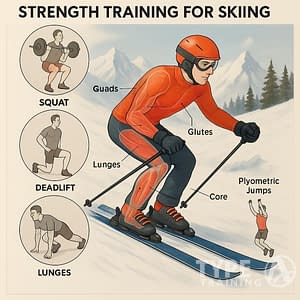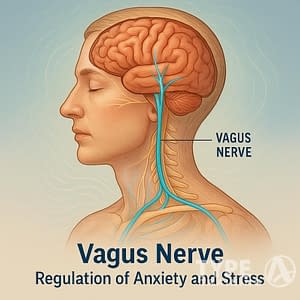Poor posture sneaks up on a lot of us—rounded shoulders, a stiff back, or that nagging tension after hours at your desk. Stretching has its place, but honestly, it only scratches the surface.
Incorporating core training for better posture into your daily routine will not only enhance your strength but also improve your overall posture.
Core training for better posture is where real change happens. It gives your body the strength and stability it craves to hold proper posture, day in and day out.
With core training for better posture, you can achieve a more balanced and aligned body, leading to long-term benefits.
Popular posts:
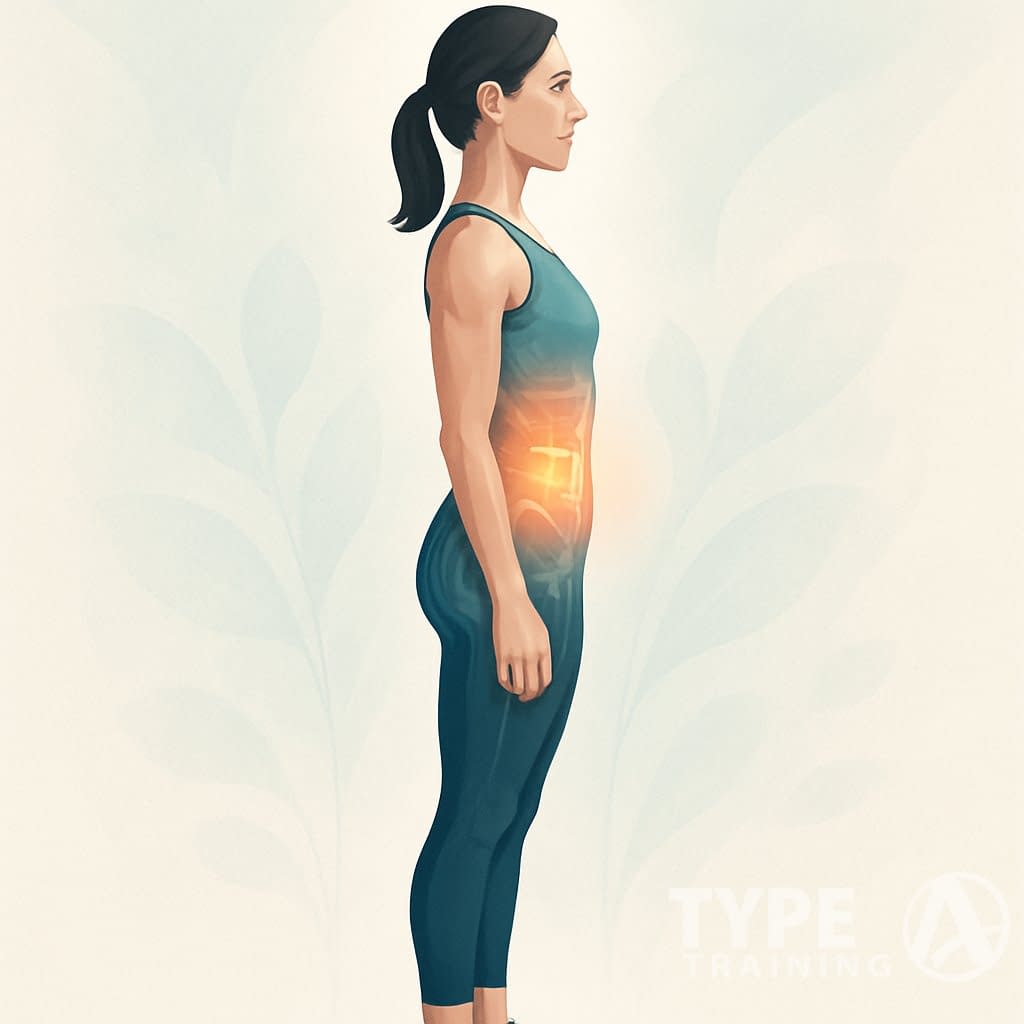
Your core isn’t just about abs. It’s this whole group of muscles—spine, pelvis, and hips—that keep you balanced and aligned through core training for better posture.
Weak or tight core muscles drag your posture down, leading to back pain, fatigue, even shallower breathing. Strengthening them gives you a solid foundation so you can stand taller, move with more control, and spare your spine a lot of stress.
Incorporating core training for better posture into your routine can drastically improve your overall body alignment.
Regular core training for better posture can lead to noticeable improvements in how you hold yourself throughout the day.
By focusing on core training, you set yourself up for better balance and easier movement. The right approach can help you fix poor posture habits and build strength that sticks with you for the long haul.
Key Takeaways
- Core strength is the backbone of good posture
- Weak or tight core muscles can mess with alignment and cause pain
- Training your core leads to better balance and lasting support
How Core Training Directly Impacts Posture
Understanding how core training for better posture impacts your overall health is crucial for maintaining a strong foundation.
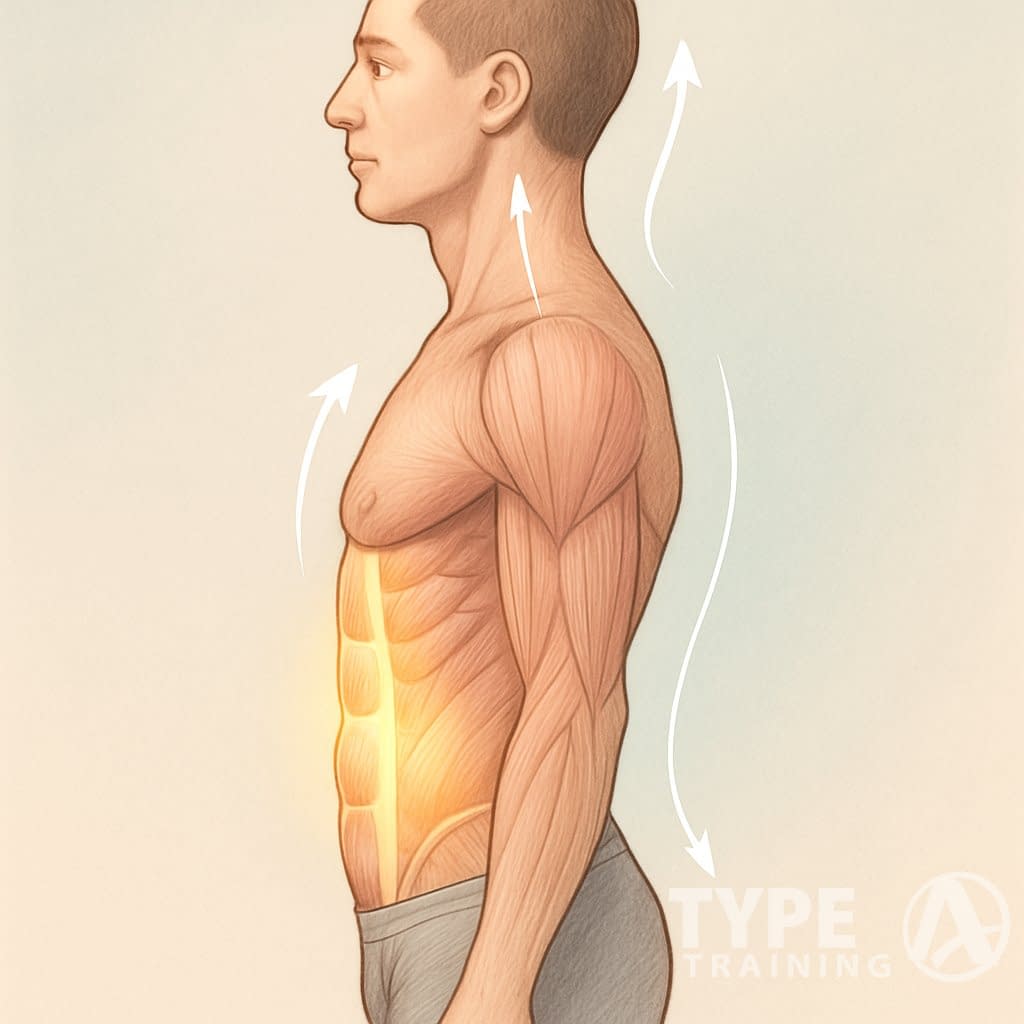
Strong core muscles keep your spine in line, support you during daily movement, and give you the stability you need when you’re upright. When your core kicks in, your back doesn’t have to pick up all the slack, so your posture stays balanced and feels less forced.
The Role of Core Muscles in Spinal Alignment
Your core is a team effort—transverse abdominis, multifidus, diaphragm, and pelvic floor muscles all pitch in. They stabilize your spine and pelvis.
When you focus on core training for better posture, your body learns to rely on its core muscles for support and stability.
When these muscles fire together, your spine stays neutral. That means less stress on your vertebrae and joints.
If those muscles don’t do their job, your lower back and shoulders start to compensate, which leads to slouching or a lopsided look.
The transverse abdominis acts like a wraparound brace. Multifidus supports each vertebra. Diaphragm and pelvic floor regulate pressure in your trunk.
Working together, they create a support system that keeps your spine steady whether you’re moving or just standing still.
Core Engagement for Everyday Activities
You use your core way more often than you might think. Sitting at your computer, carrying groceries, even just waiting in line—core engagement is always happening.
If your core’s weak, your back and neck have to work overtime. That’s usually why you end up stiff or slouchy.
Strengthening your core lets those muscles share the load.
Think about bending to pick something up. A strong core keeps your spine straight and saves your lower back from strain.
Even walking feels different—your torso stays upright and balanced when your core is switched on.
Core Stability and Upright Posture
Core stability is your ability to control your trunk when life throws you off balance. It’s crucial for holding yourself upright, especially if you’re sitting without back support or standing for ages.
Engaging in core training for better posture can transform your daily activities, making them feel less strenuous.
Research shows that core training helps your body react faster to sudden shifts—like when you trip or have to adjust to uneven ground. That quick reaction keeps you upright instead of slumping.
Stability-building moves—planks, bird dogs, controlled breathing—teach your muscles to work as a team. You end up with a posture that feels natural, not forced, and your back and shoulders get a break.
Understanding the Core: Beyond Abs
Your core is so much more than visible abs. It’s those deep stabilizing muscles that support your spine, control how you move, and keep everything in line. When they work together, they give you stability that shows up in your posture and balance.
Key Core Muscle Groups Explained
Key muscle groups involved in core training for better posture include the transverse abdominis and multifidus.
Your core is like a network around your trunk and pelvis. There’s the rectus abdominis, obliques, transverse abdominis, multifidus, spinal erectors, pelvic floor, diaphragm, and even the glutes.
Each group has a job.
- Transverse abdominis: braces your spine like a corset.
- Multifidus: tiny muscles that stabilize your vertebrae.
- Pelvic floor and diaphragm: manage breathing and pressure.
When these muscles sync up, your spine is protected from strain. That’s how you avoid slouching and stop your shoulders or hips from taking over.
Obliques and Back Muscles in Posture
Your obliques—both internal and external—stop you from twisting or leaning too far to one side. They keep you upright when you’re carrying something heavy or shifting your weight.
If your obliques are weak, you start to lean or rotate, which throws your alignment off.
Spinal erectors run along your back and help you stand tall. They work with the multifidus to keep your spine from rounding or arching too much.
By strengthening your obliques through core training for better posture, you help maintain an upright position.
When these muscles get tired, it’s hard to keep from collapsing forward.
Together, obliques and back muscles balance out the front and back of your body. That balance is what lets you keep a neutral spine without feeling strained.
Why Core Strength Matters for Posture
Good posture really comes down to holding a neutral spine. If your core isn’t strong, your body leans on ligaments and other passive stuff, which isn’t great for comfort.
Strong core muscles brace your spine for daily things—sitting, walking, lifting groceries. That means less stress on your lower back and shoulders.
Core strength also helps you transfer force from your legs to your upper body. Walking or standing for long stretches feels easier when your trunk muscles help out. That’s the kind of efficiency that makes good posture last.
Core training for better posture is essential for effective force transfer and overall body efficiency.
Common Causes and Consequences of Poor Posture
Poor posture usually starts with weak support, muscle imbalances, and daily habits that stress your spine. These problems can lead to back pain, less mobility, and strain on your core if you don’t tackle them.
Weak Core and Back Pain
When practicing core training for better posture, you’ll notice a significant reduction in back pain.
Your core muscles do more than just help during workouts. They support your spine and keep you aligned whether you’re moving or just standing around.
When your core’s weak, your lower back picks up the slack and ends up overloaded.
That extra pressure causes discomfort, stiffness, or sometimes chronic back pain.
Over time, weak abs and deep stabilizers make it tough to stay upright, so your back muscles end up working too hard.
A weak core also throws off your balance. Without solid support, you might slump or shift forward, which ups your risk of falling or tweaking something.
Strengthening your core eases that strain and lets your back muscles do their real job.
Imbalanced Muscles and Poor Posture
A lot of bad posture comes from muscle imbalances—tight in some spots, weak in others. If your chest gets tight from slouching, your shoulders round forward.
Meanwhile, upper back muscles like rhomboids and traps get lazy and weak.
This pulls your spine out of alignment. You might notice your head jutting forward, shoulders rounding, or your lower back curving too much.
All those patterns put uneven stress on your joints and tissues.
To fix it, you need both stretching and strengthening. Tight muscles—like hip flexors or chest—need stretching. Weak ones—like glutes or deep neck flexors—need targeted work to bring things back into balance.
Everyday Habits That Affect Core Function
The stuff you do every day shapes your posture more than you think. Long hours sitting, hunching over your phone, or lugging heavy bags can weaken your core and overload your back. Even little things like crossing your legs or slouching in your chair add up.
Your work setup matters a lot. A bad chair or a screen that’s too low can make you hunch forward. That forward position kills core engagement and makes your back muscles work overtime.
Small changes help. Adjust your desk, stand up every hour, and practice better sitting posture to take the pressure off your spine. These tweaks protect your core and help prevent back pain from creeping in.
Adopting good habits alongside core training for better posture can lead to lasting changes in your physical health.
Core Training Benefits for Balance and Stability
A strong core gives you better control over your movements, steadier posture, and lowers your risk of falls or injuries. Training the muscles around your abdomen, lower back, and pelvis improves how you maintain balance and react to sudden changes.
How Core Strength Improves Balance
Your core is the center of control for staying upright. If these muscles are weak, your arms and legs can’t move as well, and you’ll feel less steady.
Strong abs and lower back muscles help you balance when you’re standing, walking, or switching directions.
Core stability matters for the little things too. Reaching for a high shelf or carrying groceries? Your body needs to stay aligned.
With better core engagement, you use less energy to stabilize yourself, so you don’t wobble or strain as much.
Simple moves like planks, bridges, and bird-dogs teach your body to hold steady. Over time, that builds coordination between your upper and lower body, making movements smoother and more controlled.
Stability for Injury Prevention
If your core is weak, your spine and joints take on more stress. That can lead to bad posture, muscle strain, or even falls.
Building stability through core training protects your back, hips, and knees by supporting them the way they’re meant to be.
When you’re stable, you can handle sudden changes—like slipping or shifting weight—without losing your balance.
Strong core engagement helps you recover quickly instead of tipping over.
Some key benefits:
- Lower risk of lower back pain
- Better spine and pelvis alignment
- Improved joint support during movement
Core Engagement in Athletic Performance
Athletes need balance and stability for almost everything—running, jumping, throwing. Core engagement transfers power between your upper and lower body so movements are more efficient.
Without stability, you waste energy and your performance drops.
Sports that demand quick direction changes, like basketball or soccer, really depend on core stability. A strong middle helps you stay upright and in control, even at top speed.
Training with medicine ball twists, rotational planks, or balance board drills challenges your core in ways that mimic real sports. This not only boosts performance but also cuts down on injuries by keeping your body steady under pressure.
Core Training for Better Posture: A Path to Alignment
Embracing core training for better posture is a pathway to achieving a healthier and more aligned body.
Strong posture? It really starts with how you train and use your core. You need exercises that target the right muscles, habits you can stick with, and a plan that lets you progress gradually—otherwise, results just don’t stick.
Targeted Core Exercises
If you want better posture, you’ll want to focus on moves that keep your spine and pelvis stable. These kinds of exercises wake up your deep core muscles, helping your body stay aligned and taking pressure off your back.
Some of my favorites include:
-
- Plank – Works your whole core and builds real stability.
- Side Plank – Hits the obliques and helps with side-to-side balance.
- Bird Dog – Great for balance and coordination, plus it protects your spine.
- Dead Bug – Keeps your core engaged while your arms and legs move.
- Glute Bridge – Activates glutes and core, giving your pelvis solid support.
Each of these exercises contributes to core training for better posture and should be included in your routine.
Try 2–3 sets of each. Keep things slow and controlled—don’t rush it. Focus on good form and keep your core gently engaged by pulling your belly button in a bit, but don’t hold your breath.
Tips for Safe and Consistent Training
Consistency really beats intensity here. A few minutes of focused core work, several times a week, tends to work better than the occasional long, exhausting session.
Watch your form. Bad technique can put unnecessary strain on your back or hips. Keep your spine neutral, breathe naturally, and if something hurts sharply, stop.
It’s also smart to build these habits into everyday life. Try sitting up tall with your shoulders back, or engage your core muscles while waiting in line. These little tweaks reinforce what you do in your workouts and make good posture more natural.
Progression and Maintaining Results
Progressing in your core training for better posture will enhance your body’s ability to stay balanced and aligned.
Your body gets used to exercise, so you’ll want to up the challenge bit by bit. Start with easier versions—like planks on your knees or shorter holds—then slowly add time, reps, or try tougher moves.
Jot down your progress, even if it’s just how long you can hold a plank with good form. Those small wins add up, making your core stronger and your posture feel almost automatic.
Mix core training with moving around during the day. Sitting too long can undo your hard work, so stand up, stretch, and reset your posture whenever you remember. Staying aware like this helps your improvements last.
Frequently Asked Questions
Core training supports your posture by strengthening the muscles that stabilize your spine and pelvis. It also helps with balance, avoiding injuries, and just moving better in daily life.
Ultimately, core training for better posture plays a pivotal role in sustaining your overall wellness.
What are the top benefits of core strengthening for posture improvement?
Stronger core muscles mean better spinal alignment and less slouching. You’ll find it easier to sit and stand tall, and you’ll probably notice less strain on your back and shoulders.
How do core exercises contribute to overall physical health?
Core exercises boost stability, balance, and coordination. They also help you breathe more easily, can ease lower back discomfort, and make all kinds of physical activity safer.
Can improving core strength lead to better posture?
Absolutely. With a stronger core, the muscles that keep you upright can stay active all day. That makes it way easier to keep good alignment whether you’re sitting, standing, or on the move.
What core exercises are most effective for beginners aiming to enhance posture?
Start with simple moves like planks, bridges, and dead bugs. These wake up your deep abs and back muscles, and you don’t need fancy gear or advanced skills.
How does a strong core relate to injury prevention?
A stable core takes pressure off your spine and joints. It helps your body handle movement and force more evenly, cutting down the risk of both overuse and sudden injuries.
What is the impact of core training on day-to-day activities?
When your core muscles get stronger, all sorts of daily stuff just feels easier. Lifting things, reaching for something on a high shelf, or even bending down—suddenly, it’s less of a hassle.
Walking or climbing stairs doesn’t wear you out as fast. Sitting for a while? That’s a bit more comfortable, too. It’s surprising how much difference a solid core can make.
